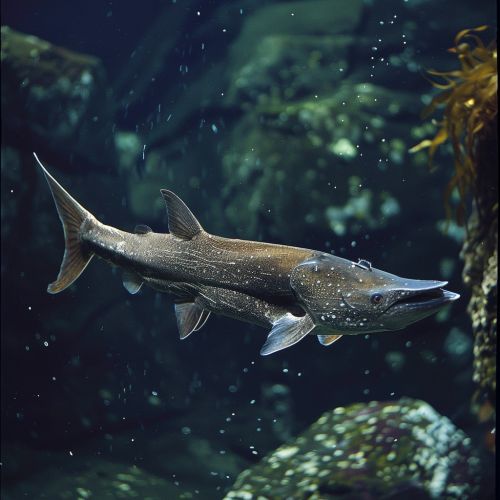Coelacanth
Introduction
The coelacanth is a rare order of fish known as Coelacanthiformes, which includes two extant species: the West Indian Ocean coelacanth (Latimeria chalumnae) and the Indonesian coelacanth (Latimeria menadoensis). These lobe-finned fishes are notable for their distinctive morphology, ancient lineage, and unique evolutionary significance. Coelacanths were once thought to have gone extinct approximately 66 million years ago, until a living specimen was discovered in 1938 off the coast of South Africa.
Taxonomy and Classification
Coelacanths belong to the class Sarcopterygii, which also includes lungfish and tetrapods. They are part of the order Coelacanthiformes, family Latimeriidae. The genus Latimeria is named after Marjorie Courtenay-Latimer, who discovered the first modern specimen. The two extant species are Latimeria chalumnae and Latimeria menadoensis.
Morphology and Anatomy
Coelacanths possess several unique anatomical features that distinguish them from other fish. They have a three-lobed caudal fin, known as a diphycercal tail, which is supported by a notochord rather than a vertebral column. Their pectoral and pelvic fins are lobed and resemble the limbs of tetrapods, suggesting an evolutionary link.


The coelacanth's skull is divided into two parts by an intracranial joint, allowing for a wide gape. Their eyes are adapted to low-light conditions, featuring a reflective layer called the tapetum lucidum. Coelacanths also have a unique rostral organ in their snout, which is thought to aid in electroreception.
Habitat and Distribution
Coelacanths are primarily found in deep marine environments, typically at depths of 150 to 700 meters. They inhabit underwater caves and lava-cave systems, where they can avoid strong currents and predators. The West Indian Ocean coelacanth is found along the coasts of East Africa, while the Indonesian coelacanth is located near the island of Sulawesi.
Behavior and Ecology
Coelacanths are nocturnal and exhibit a behavior known as drift-feeding, where they remain motionless in the water and use their electroreceptive capabilities to detect prey. Their diet consists mainly of cephalopods, small fish, and other marine organisms. Coelacanths are ovoviviparous, meaning that the females give birth to live young after the eggs hatch internally.
Evolutionary Significance
Coelacanths are often referred to as "living fossils" due to their ancient lineage and morphological similarity to their prehistoric ancestors. They provide valuable insights into the evolution of lobe-finned fishes and the transition from aquatic to terrestrial life. The study of coelacanths has helped scientists understand the development of limbs and other tetrapod characteristics.
Conservation Status
Both species of coelacanth are considered critically endangered by the IUCN. Their populations are threatened by habitat destruction, accidental capture in fishing nets, and environmental changes. Conservation efforts are focused on protecting their habitats and reducing bycatch in fisheries.
Research and Discoveries
The discovery of the first living coelacanth in 1938 was a significant event in the field of paleontology. Subsequent research has involved deep-sea submersible expeditions, genetic studies, and the examination of fossil records. Advances in technology have allowed scientists to study coelacanths in their natural habitats, providing new insights into their behavior and biology.
